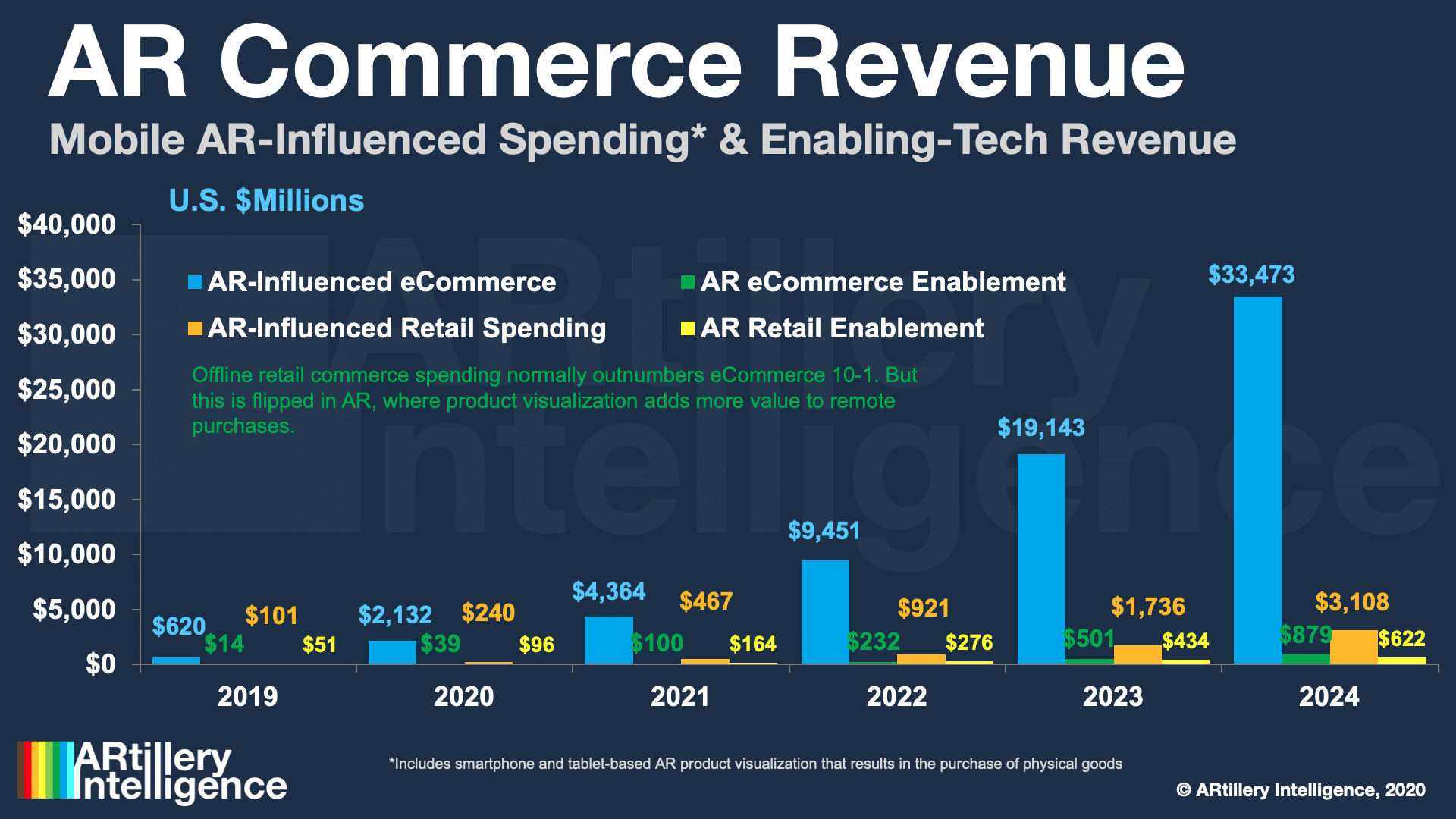
We continue to see metrics that validate AR’s ability to boost product sales. This can be in both eCommerce and in-aisle retail contexts. The former is obviously more pertinent in the current environment of lockdowns, but the latter could shine in retail’s “touchless” post-COVID era.
The latest evidence comes from Home Depot, which reports that its AR product visualization feature boosts conversions 2x-3x over eCommerce benchmarks. Its AR feature lets customers visualize a range of products in-home through the smartphone camera before purchasing.
As further background, Home Depot went for a web-AR approach, given its relatively low friction in launching in-home (or anywhere) AR experiences. And it has more online products supported by AR visualization than the total number of products that fit in one physical Home Depot store.
This has been a big area of investment for Home Depot as it’s refocused its digital efforts to “meet the moment” given 100 percent growth in Q2 online sales. For such an extensive and high-variant (sizes, colors) product catalog as Home Depot’s, AR visualization is particularly additive.

Bases Covered
When it comes to AR’s use in shopping and commerce, there are two main flavors: AR visualization and visual search. The former is what Home Depot has done above, and is a popular tool to visualize a range of products before buying in order to evaluate style, color, and fit.
Visual search is the less-prevalent but more promising AR modality that lets you point your phone at items to contextualize them. We say it’s less prevalent because there’s more complexity and AI involved… but it’s more promising because of its utility in making the physical world clickable.
We mention visual search here because Home Depot is now doing that too. A feature within its mobile app lets shoppers point their phones at objects to match them against Home Depot’s inventory, including identifying products and presenting purchase options or in-store availability.
This visual search route is notable in that it goes back to the “touchless” retail concept cited above. Consumers can not only query items visually in stores to avoid touching them… but they can do more visual research before they even get to the store, thus reducing time in-aisle.

Hybrid-Normal
The theme in all of the above is meeting the moment. eCommerce is inflecting across the board — even to the point of offsetting physical retail spending declines. This means that 2020 consumer spending is flat — good news, considering. Spending hasn’t declined… it’s just shifted online.
So the retailers and brands that are shifting with it are the survivors of the Covid era. That can be seen in Home Depot’s moves above, as well as exemplars like Target and Walmart who are reporting record-breaking quarterly earnings as they lean into new models like curbside pickup.
But more than their temporal importance, these new shopping and commerce fulfillment models may cause permanent habits and demand signals. Consumers have gotten the taste in their mouths for streamlined shopping, time savings and tech-enabled procedural efficiencies.
So the post-Covid world could be a hybrid of old and new normals, where new discoveries can be cherry-picked for permanent implementation. AR is on that list of tools that will help consumers shop smarter. Retailers who meet that demand will have an edge in the post-Covid era.






